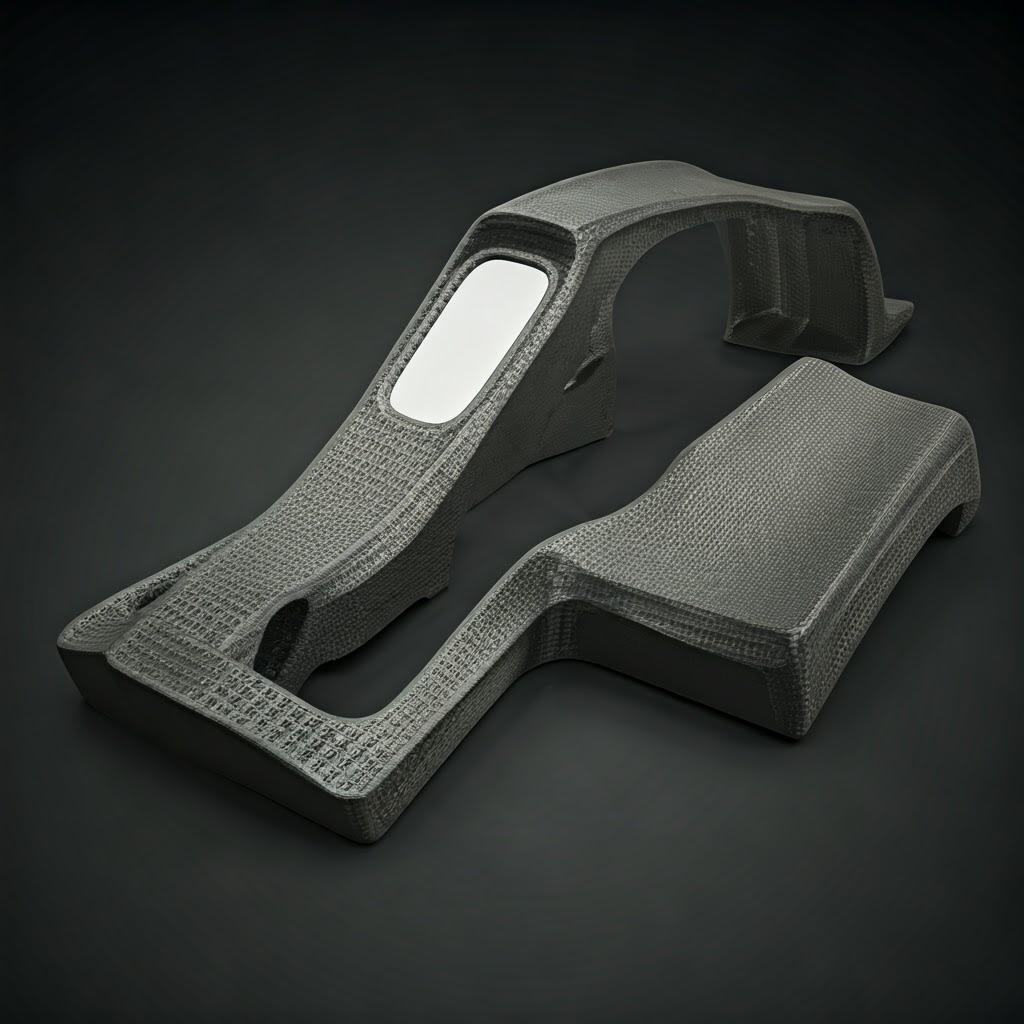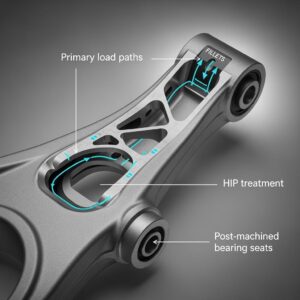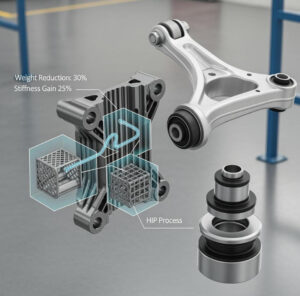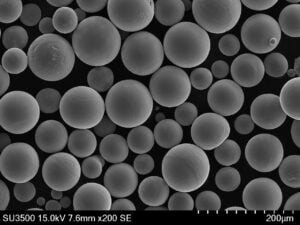Precision Instrument Panel Frames: Revolutionizing Manufacturing with Metal 3D Printing
目次
Introduction: The Critical Role of Instrument Panel Frames and the Metal AM Advantage
In industries spanning aerospace, automotive, medical devices, and industrial machinery, the instrument panel frame serves as a foundational component. It provides structural integrity and precise mounting points for critical displays, controls, and instrumentation. The reliability and accuracy of these frames directly impact the overall performance, safety, and user experience of the final product. Traditionally manufactured through processes like stamping, machining, or casting, instrument panel frames are now undergoing a transformative shift with the advent of metal additive manufacturing (AM), also known as metal 3Dプリンティング. This innovative technology offers unprecedented design freedom, material efficiency, and the potential for enhanced performance, making it an increasingly attractive solution for engineers and procurement managers seeking cutting-edge manufacturing solutions. At メタル3DP, we are at the forefront of this revolution, providing industry-leading metal 3D printing equipment and high-performance metal powders to enable the creation of complex and high-quality instrument panel frames.
What are Precision Instrument Panel Frames Used For? Exploring Key Applications and Industries
Precision instrument panel frames are integral to a diverse range of applications where accurate mounting and structural support for instrumentation are paramount. Their primary function is to securely house and position vital components, ensuring optimal functionality and user interaction. Here’s a closer look at their use across key industries:
- 航空宇宙 In aircraft cockpits, instrument panel frames hold critical flight control displays, navigation systems, and monitoring instruments. The stringent demands of the aerospace industry necessitate lightweight yet robust frames with high dimensional accuracy to ensure the reliable operation of these essential systems. Metal 3D printing allows for the creation of complex geometries that can reduce weight without compromising structural integrity, a significant advantage in aerospace applications.
- 自動車: Within vehicles, instrument panel frames support the dashboard, infotainment screens, climate control units, and various gauges. The automotive industry benefits from metal 3D printing’s ability to produce intricate designs that can improve aesthetics, ergonomics, and integration of increasingly sophisticated electronic systems. Furthermore, rapid prototyping capabilities accelerate the design and development process for new vehicle models.
- 医療機器 In medical equipment, precision instrument panel frames are used in diagnostic devices, monitoring systems, and surgical workstations. Accuracy and reliability are crucial in this sector, and metal 3D printing enables the production of custom frames tailored to specific device requirements. Materials like 316L stainless steel, offered by メタル3DP, provide the biocompatibility and corrosion resistance often required in medical applications.
- 産業製造: Across various industrial sectors, instrument panel frames are used in control panels for machinery, monitoring stations in power plants, and operator interfaces for complex equipment. These frames need to withstand demanding operational environments, and metal 3D printing offers the ability to produce robust and durable components with customized features for specific industrial needs.

Why Use Metal 3D Printing for Instrument Panel Frames? Advantages Over Traditional Manufacturing
Opting for metal 3D printing over traditional manufacturing methods for instrument panel frames presents a compelling array of advantages, particularly for demanding applications requiring precision, complexity, and performance optimization.
| Advantage | Description
Recommended Materials and Why They Matter: 316L and Ti-6Al-4V for Optimal Performance
The selection of the appropriate metal powder is critical to achieving the desired mechanical properties, corrosion resistance, and overall performance of 3D-printed instrument panel frames. For high-precision applications, two materials stand out: 316L stainless steel and Ti-6Al-4V titanium alloy. メタル3DP offers both of these high-quality metal powders, manufactured using advanced gas atomization and PREP technologies to ensure high sphericity and excellent flowability, essential for consistent and reliable printing.
316Lステンレススチール:
- プロパティ Austenitic stainless steel with excellent corrosion resistance, high tensile strength, and good ductility. Its biocompatibility makes it suitable for medical applications.
- Why it matters: For instrument panel frames in harsh environments or those requiring biocompatibility (e.g., medical devices), 316L offers exceptional durability and resistance to degradation. Its weldability and machinability also facilitate post-processing if needed.
Ti-6Al-4V Titanium Alloy:
- プロパティ An alpha-beta titanium alloy known for its high strength-to-weight ratio, excellent corrosion resistance, and biocompatibility. It is significantly lighter than steel while maintaining comparable strength.
- Why it matters: In aerospace and automotive applications where weight reduction is crucial for fuel efficiency or performance, Ti-6Al-4V provides a significant advantage. Its high strength ensures the structural integrity of the instrument panel frame under demanding conditions.
Choosing between 316L and Ti-6Al-4V depends on the specific requirements of the application. Factors such as the operating environment, weight constraints, mechanical load, and biocompatibility needs will influence the material selection. Consulting with the experts at メタル3DP can provide valuable insights into selecting the optimal powder for your specific instrument panel frame application.

Design Considerations for Additive Manufacturing: Optimizing Geometry, Wall Thickness, and Support Requirements
Designing for metal 3D printing differs significantly from designing for traditional manufacturing processes. To fully leverage the capabilities of additive manufacturing and achieve optimal results for instrument panel frames, several key design considerations must be taken into account:
- Topology Optimization: Metal 3D printing allows for the creation of complex, organic shapes that are difficult or impossible to produce with conventional methods. Topology optimization is a design approach that uses algorithms to identify and remove material in non-critical areas, resulting in lightweight yet structurally sound parts. This is particularly beneficial for aerospace and automotive instrument panel frames where weight reduction is a primary goal.
- 格子構造: Incorporating lattice structures within the instrument panel frame can further reduce weight while maintaining stiffness and strength. These intricate internal networks can be tailored to specific load-bearing requirements, offering a highly efficient use of material. Metal3DP’s advanced printing technologies excel at producing complex lattice geometries with high accuracy.
- 壁の厚さ: Careful consideration of wall thickness is crucial for successful metal 3D printing. Minimum wall thicknesses are dictated by the chosen material and printing process. Designing too thin can lead to structural weakness or printing failures, while overly thick walls can increase material usage and printing time. Collaboration with a knowledgeable metal 3D printing service provider like メタル3DP can help determine the optimal wall thicknesses for your specific design and material.
- サポート体制: Support structures are often necessary in metal 3D printing to prevent warping, sagging, and collapse of overhanging features during the build process. The design of these supports is critical for ensuring part accuracy and minimizing post-processing effort. Factors such as support material, density, and attachment points need careful consideration. Our application engineers at Metal3DP have extensive experience in optimizing support structures for various geometries and materials.
- Orientation: The orientation of the instrument panel frame on the build platform can significantly impact surface finish, support requirements, and mechanical properties. Optimizing the build orientation can minimize the need for support structures on critical surfaces and improve overall part quality.
Tolerance, Surface Finish, and Dimensional Accuracy: Understanding Precision Levels in Metal AM
Achieving the required tolerance, surface finish, and dimensional accuracy is paramount for instrument panel frames that need to integrate seamlessly with other components. Metal 3D printing offers varying levels of precision depending on the technology, material, and post-processing techniques employed.
Description | Tolerance: Refers to the permissible variation in the dimensions of the printed part. Metal 3D printing can achieve tolerances ranging from ±0.1 mm to ±0.02 mm, depending on the technology and material. For critical features of instrument panel frames, tighter tolerances ensure proper fit and functionality. | 表面仕上げ: Describes the roughness or smoothness of the printed surface. Metal 3D printed parts typically have a rougher surface finish compared to machined parts. However, various post-processing techniques like polishing, blasting, and machining can be employed to achieve smoother surfaces as required by the application. | 寸法精度: Indicates how closely the printed part matches the intended design dimensions. Factors such as material shrinkage during cooling, laser spot size (in laser-based methods), and calibration of the 3D printer influence dimensional accuracy. Metal3DP’s high-precision printers are engineered to deliver industry-leading accuracy.
Understanding the achievable tolerance, surface finish, and dimensional accuracy for a given metal 3D printing process and material is crucial during the design phase of instrument panel frames. Specifying realistic requirements and considering necessary post-processing steps will ensure the final part meets the functional and aesthetic demands of the application.

Post-Processing Requirements: Refining Metal 3D Printed Instrument Panel Frames
While metal 3D printing offers significant advantages in creating complex geometries, post-processing is often required to achieve the final desired properties, surface finish, and dimensional accuracy of instrument panel frames. Common post-processing steps include:
- サポートの取り外し: After the printing process, support structures need to be carefully removed. This can be done manually, mechanically (e.g., using pliers or cutting tools), or through chemical dissolution, depending on the support material and part geometry. Optimized support design, as offered by Metal3DP’s expertise, can minimize the effort and potential damage during this stage.
- 熱処理: Heat treatment processes are often employed to relieve internal stresses, improve mechanical properties (such as hardness and tensile strength), and achieve the desired microstructure of the metal. The specific heat treatment cycle depends on the material and the intended application of the instrument panel frame.
- CNC Machining: For features requiring very tight tolerances or specific surface finishes that cannot be directly achieved through 3D printing, CNC machining can be used as a secondary process. This is particularly relevant for critical mounting interfaces or high-precision alignment features on instrument panel frames.
- 表面仕上げ: Various surface finishing techniques can be applied to improve the aesthetics, corrosion resistance, or wear properties of the instrument panel frame. These include:
- 研磨: To achieve a smooth, reflective surface.
- Blasting: To create a matte or textured finish.
- コーティング: Applying a protective layer (e.g., paint, powder coating, or plating) for enhanced corrosion resistance or specific functional properties.
The specific post-processing requirements for a metal 3D printed instrument panel frame will depend on the application, material, and the capabilities of the chosen metal 3D printing service provider. Early consideration of these requirements during the design phase can help optimize the overall manufacturing process and ensure the final part meets all specifications.
Common Challenges and How to Avoid Them: Ensuring Successful Metal 3D Printing Outcomes
While metal 3D printing offers numerous advantages, certain challenges can arise during the process. Understanding these potential issues and implementing preventative measures is crucial for achieving high-quality instrument panel frames.
- Warping and Distortion: Thermal stresses during the printing process can lead to warping or distortion of the part, particularly for large or complex geometries.
- How to avoid: Optimize part orientation on the build platform, employ appropriate support structures to anchor the part, and carefully control the build chamber temperature. Utilizing simulation software to predict and mitigate potential distortion is also beneficial. Metal3DP’s expertise in process optimization minimizes these risks.
- Support Removal Difficulties: Poorly designed or overly aggressive support structures can be challenging to remove without damaging the part’s surface.
- How to avoid: Design support structures with breakaway points or use soluble support materials when available. Optimize support density and attachment points to balance support effectiveness with ease of removal.
- Porosity and Density Issues: Inconsistent melting or insufficient laser power (in powder bed fusion processes) can result in porosity within the printed part, compromising its mechanical strength.
- How to avoid: Select appropriate printing parameters optimized for the chosen metal powder. Ensure the powder has good flowability and packing density. Metal3DP’s high-quality metal powders and advanced printing equipment are designed to minimize porosity.
- Surface Finish Imperfections: Metal 3D printed surfaces can be rough, requiring post-processing for smoother finishes.
- How to avoid: Optimize build orientation to minimize stepped surfaces. Consider using finer powder particle sizes. Plan for necessary post-processing steps like polishing or blasting during the design phase.
- Dimensional Inaccuracies: Variations in material shrinkage or printer calibration can lead to deviations from the intended dimensions.
- How to avoid: Calibrate the 3D printer regularly. Account for material shrinkage in the design phase. Consider using sacrificial features for dimensional control and post-processing.

How to Choose the Right Metal 3D Printing Service Provider: Key Considerations for B2B Buyers
Selecting the right metal 3D printing service provider is a critical decision for businesses seeking reliable and high-quality instrument panel frames. Consider the following factors when evaluating potential suppliers:
- Material Capabilities: Ensure the provider offers the specific metal powders required for your application (e.g., 316L, Ti-6Al-4V) and has experience processing them. メタル3DP boasts a wide range of high-performance metal powders.
- Equipment and Technology: Inquire about the types of metal 3D printers they use (e.g., DMLS, SLM, EBM) and their capabilities in terms of build volume, accuracy, and surface finish. Our industry-leading SEBM printers at Metal3DP deliver exceptional volume, accuracy, and reliability.
- Quality Control and Certifications: Verify if the provider has robust quality control processes and relevant certifications (e.g., ISO 9001, AS9100 for aerospace). This ensures consistent quality and adherence to industry standards.
- Design and Engineering Support: A good service provider should offer expertise in design for additive manufacturing (DfAM), helping you optimize your instrument panel frame for the 3D printing process. Metal3DP provides comprehensive application development services.
- Post-Processing Services: Determine if the provider offers the necessary post-processing services, such as support removal, heat treatment, CNC machining, and surface finishing, to meet your requirements.
- Lead Times and Production Capacity: Evaluate their lead times for manufacturing and shipping, as well as their capacity to handle your production volumes, especially for wholesale orders.
- コスト競争力: While cost is a factor, prioritize overall value, including quality, expertise, and reliability. Request detailed quotes and understand the pricing structure.
- Communication and Customer Support: A responsive and communicative provider is essential for a smooth and successful collaboration.
Cost Factors and Lead Time: Understanding the Economics of Metal 3D Printing
The cost and lead time for metal 3D printed instrument panel frames are influenced by several factors:
- 材料費: The price of the metal powder (e.g., 316L, Ti-6Al-4V) is a significant contributor to the overall cost. Specialized alloys can be more expensive.
- Build Volume and Part Size: Larger parts that occupy more build volume and require longer printing times will generally cost more.
- 幾何学の複雑さ: Intricate designs with complex features and extensive support structures can increase printing time and material usage, thus affecting the cost.
- 後処理の要件: The extent and type of post-processing required (e.g., heat treatment, machining, coating) will add to the overall cost and lead time.
- 生産量: Higher production volumes can sometimes lead to economies of scale, reducing the cost per part.
- Machine Time and Labor: The time the printer spends building the part and the labor involved in pre-processing, printing, and post-processing are factored into the cost.
- Service Provider’s Pricing Model: Different service providers may have varying pricing structures based on machine time, material usage, or a combination of factors.
Lead times can vary depending on the complexity of the part, the chosen material, the service provider’s current workload, and the required post-processing steps. It’s crucial to discuss lead time expectations with your chosen provider early in the process. While metal 3D printing can offer faster turnaround times for prototypes and low-volume production compared to traditional tooling, larger production runs may require more time.

よくある質問(FAQ)
- What are the typical tolerances achievable with metal 3D printing for instrument panel frames?
- Typical tolerances range from ±0.1 mm to ±0.02 mm, depending on the printing technology, material, and part geometry. Tighter tolerances can often be achieved with post-processing like CNC machining.
- Is metal 3D printing cost-effective for large-scale production of instrument panel frames?
- Metal 3D printing is often most cost-effective for low to medium volume production, complex geometries, and customized parts. For very high volumes, traditional manufacturing methods may still be more economical. However, the benefits of design freedom and rapid iteration can still make metal AM a valuable tool in the overall product lifecycle.
- What are the common metal alloys used for 3D printing instrument panel frames?
- Common alloys include stainless steels (like 316L), titanium alloys (like Ti-6Al-4V), aluminum alloys, and nickel-based superalloys, depending on the specific application requirements for strength, weight, corrosion resistance, and temperature performance. メタル3DP offers a comprehensive portfolio of high-quality metal powders.
Conclusion: Embracing the Future of Instrument Panel Frame Manufacturing with Metal 3D Printing
Metal 3D printing is revolutionizing the way instrument panel frames are designed and manufactured across various industries. Its ability to produce complex geometries, optimize designs for weight and performance, and utilize high-performance materials like 316L and Ti-6Al-4V offers significant advantages over traditional methods. By carefully considering design principles for additive manufacturing, understanding achievable tolerances and surface finishes, and choosing a reliable partner like メタル3DP, engineers and procurement managers can unlock the full potential of metal AM to create precision instrument panel frames that meet the demanding requirements of modern applications. Contact メタル3DP today to explore how our cutting-edge systems and materials can power your organization’s additive manufacturing goals.
シェアする
MET3DP Technology Co., LTDは、中国青島に本社を置く積層造形ソリューションのリーディングプロバイダーです。弊社は3Dプリンティング装置と工業用途の高性能金属粉末を専門としています。
関連記事










